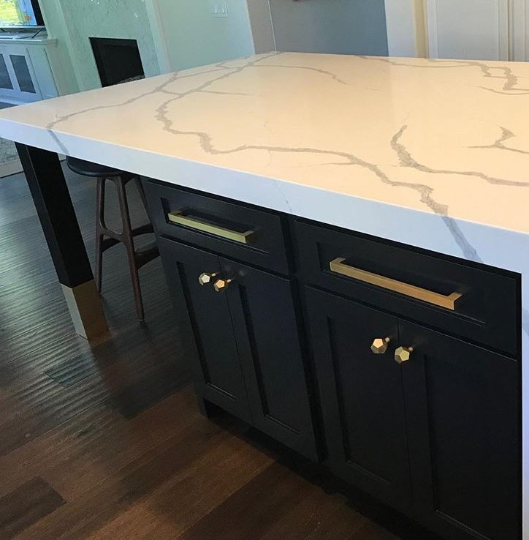Include Stability and Appeal with Tough Legs For Kitchen Island Setups
Include Stability and Appeal with Tough Legs For Kitchen Island Setups
Blog Article
An Overview to Choosing the Perfect Legs For Kitchen Area Island for Your Home
Selecting the optimal legs for your kitchen area island is a nuanced choice that influences both the performance and aesthetic allure of this main room. As you take into consideration these components, it comes to be noticeable that the ideal legs can change not just the appearance of your kitchen area but additionally its usability for years to come.

Understanding Kitchen Island Legs
When choosing legs for a kitchen island, it's necessary to understand their aesthetic and useful duties in the general layout. The legs offer as an important support group, guaranteeing stability and longevity for the island, which commonly functions as a work space, dining location, or collecting spot. The selection of product and construction technique must be robust sufficient to stand up to daily use and prospective wear.
In enhancement to their structural duties, legs add significantly to the island's visual allure. They can improve the kitchen area's design, whether via conventional, modern, or diverse layouts. The elevation and proportion of the legs are additionally critical considerations; they must integrate with the island's countertop height while ensuring comfortable seating for those making use of the room.
Moreover, the leg design can affect the total circulation of the cooking area. Open, ventilated leg designs can create a sense of agility, while strong, considerable legs may share a much more grounded and steady visual - Legs For Kitchen Island. Comprehending these visual and functional elements will certainly assist house owners in making informed options that match their kitchen area's style and improve its use
Popular Styles and Products
The choice of legs for a cooking area island includes a range of popular designs and products, each offering one-of-a-kind qualities that can enhance both capability and visual appeals. Amongst one of the most in-demand styles are modern, rustic, and conventional. Contemporary legs frequently include smooth, minimalist layouts that highlight simplicity and tidy lines, making them optimal for modern cooking areas. Rustic styles, on the various other hand, accept natural aspects and frequently display recovered timber or distressed coatings, adding heat and charm to the room. Standard legs generally show elaborate information and craftsmanship, boosting classic kitchen area designs.

Elevation and Stability Factors To Consider

Stability is another essential factor to consider. The legs of the kitchen island should give appropriate support, making certain that the framework can endure day-to-day usage without moving or tottering. Material option plays a substantial role in security; metal legs, for circumstances, have a tendency to provide better stamina contrasted to wood. In addition, making sure that the island is securely anchored to the flooring or wall can boost security, particularly for bigger islands that may birth significant weight.
Matching Your Kitchen Visual
Picking the appropriate legs for your cooking area island goes past functionality; it also plays a significant role in the general aesthetic of the space (Legs For Kitchen Island). When selecting legs, think about the design style of your kitchen.
Shade is another vital read what he said aspect. Legs that match or contrast with your island's surface and surrounding cabinetry can develop aesthetic consistency or striking prime focus. For example, matching dark wood legs with a light marble countertop can include deepness and rate try this site of interest. Additionally, consider the coating of the legs; matte, shiny, or distinctive surfaces can considerably impact the total feeling of the kitchen.
Installment and Maintenance Tips
Installing cooking area island legs needs careful interest to detail to make certain both stability and visual charm. Begin by picking an appropriate location for your island, guaranteeing it is degree and has adequate space for motion. Use a stud finder to situate wall studs if you are connecting the legs to a wall surface or utilizing braces for included assistance. Mark the placement of the legs accurately before exploration.
When safeguarding the legs, use high-grade screws and, if necessary, wood adhesive for added strength. For metal legs, make sure that you are making use of suitable anchors and devices to avoid damages to your flooring. It is a good idea to look for levelness after installation, making adjustments as needed to prevent tottering.
Upkeep is equally crucial for durability - Legs For Kitchen Island. Frequently examine the legs for any type of indicators of wear or loosening, especially in high-traffic areas. Tidy the legs with an ideal cleaner, avoiding unpleasant materials that might scrape the surface area. For wooden legs, take into consideration applying a wood conditioner regularly to preserve their surface. By adhering to these installment and maintenance ideas, you can make sure that your cooking area island legs continue to be both visually attractive and practical.
Conclusion
In verdict, selecting the suitable legs for a cooking area island necessitates cautious factor to consider of elevation, security, and aesthetic compatibility. Ultimately, thoughtful leg choice plays an essential function in elevating both the usefulness and style of the kitchen area.
When selecting legs for a kitchen area island, it's crucial to recognize their useful and visual duties in the total layout. Open, ventilated leg styles can create a sense of lightness, while strong, considerable legs might share an extra grounded and steady aesthetic. The legs of the kitchen area island should supply appropriate support, ensuring that the structure can hold up against day-to-day use without wobbling or moving.Mounting kitchen area island legs calls for mindful attention to detail to guarantee both security and aesthetic charm.In final thought, choosing find out here now the proper legs for a kitchen area island necessitates mindful factor to consider of height, stability, and aesthetic compatibility.
Report this page